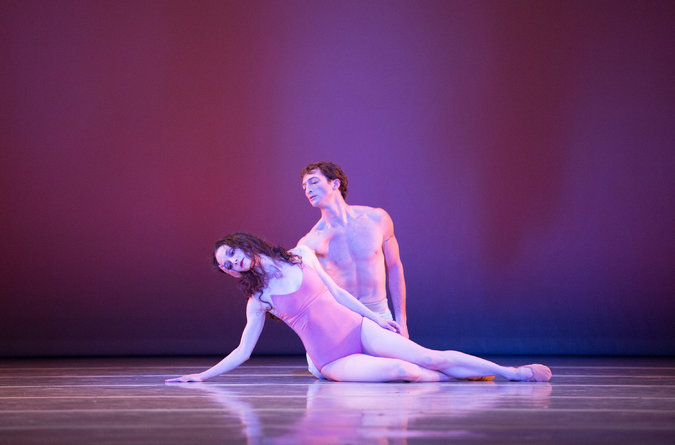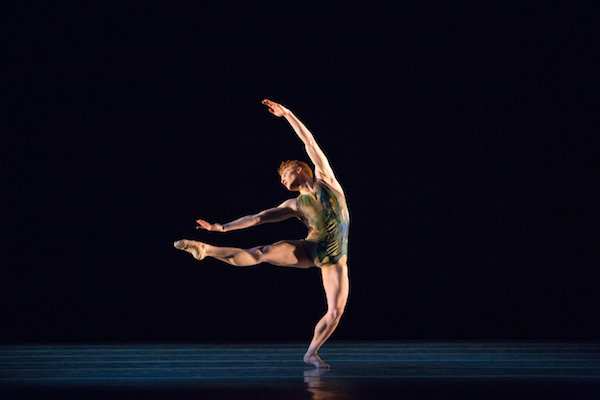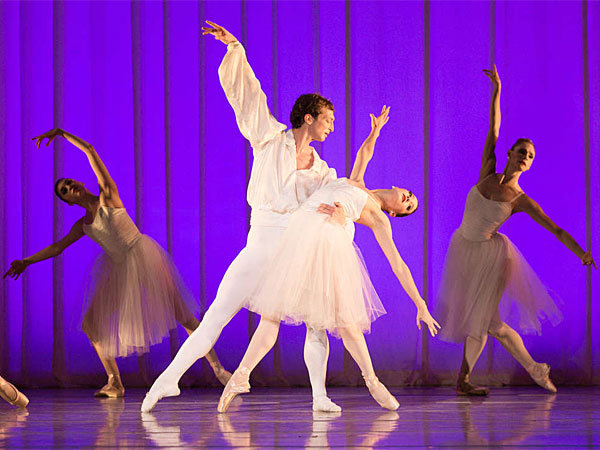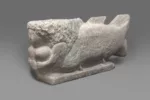[Donald went to see the Pennsylvania Ballet’s 50th anniversary show, honoring artistic director Roy Kaiser, and reflects on the makings of a successful performing arts piece. — the artblog editors]
My very first introduction to the performing arts was a Pennsylvania Ballet production of “The Nutcracker” when I was five years old. Coming back to the Academy of Music to see “Director’s Choice” on May 9 proved to be some form of homecoming for me. That night’s three unique performance pieces gave me a wide variety of dance disciplines and musical styles to sink my teeth into.
“Director’s Choice” is named for the Pennsylvania Ballet’s artistic director, Roy Kaiser, who recently announced that he was stepping down at the end of the ballet’s 50th season.
Romance in motion

“After the Rain” is a two-part, abstract piece with music by Estonian composer Arvo Part (b. 1935). The work opens with three partner groups spotlighted in a mystical blue light (lighting by Mark Stanley), and features tonal, dissonant music with crystal clear solos by violinists Luigi Mazzocchi and Dayna Anderson.
But the real standout comes in the piece’s second part, which paints a romantic relationship developing over time. The female dancer, dressed in a pink leotard, and her male companion, wearing just a pair of white bell-bottoms, play out what feels like a reincarnation of the famous beach scene between Deborah Kerr and Burt Lancaster in “From Here to Eternity”. The dance is nicely fleshed out by choreographer Christopher Wheeldon, and danced by Julie Diana–retiring from the company after 10 years as a principal dancer–and Zachary Hench.
In the background of this intimate dance is Arvo Part’s “Spiegel im Spiegel,” which I immediately recognized as the music from the trailer for “Gravity” (my favorite film of 2013). Pennsylvania Ballet Orchestra pianist Martha Koeneman played the piece with a delicate touch, supported by a lovely contrapuntal part from violinist Shannon Lee. The music perfectly matches the slow-moving, yet passionate action between Diana and Hench. The two make a wonderfully convincing couple–and afterward, I learned that they are actually married!

The world premiere of “The Accidental,” next on the program, is split into four sections, with the dancers dressed as if they are camouflaged in a rain forest. Each movement of Trey McIntyre’s choreography has a primal quality to it. My main qualm is that the musical accompaniment was recorded, with tracks from Canadian singer-songwriter Patrick Watson instead of the Pennsylvania Ballet Orchestra. These songs are quite lovely, and recorded tracks are fine for a company such as PhilaDanco, a resident dance company of the Kimmel Center, because they have a history of using a diverse palette of musical repertoire that requires recorded accompaniment (they also don’t have the luxury of an orchestra or ensemble providing the music selections). The Pennsylvania Ballet, on the other hand, has a 46-piece orchestra at its feet, and should continue to use the talent of those musicians in every piece it performs.
Giving classical music new life

The evening’s closing piece, another company premiere–of Edvard Grieg’s “Piano Concerto in A Minor”— gave classical ballet fans their money’s worth. Grieg’s concerto is considered to be one of the elite piano concerti of any era; the ballet choreography by Robert Weiss allows the dancers to express another dimension on top of the piano’s virtuosity. This was an all-white affair, with the women in tutus and toe shoes and the men in form-fitting white tights. Each dancer stands in what appears as an elegant ballroom. The concerto features influences from Norwegian folk music, and the dancers’ steps have a staccato punch to answer the referenced motif. The ballet had its world premiere with the Carolina Ballet (located in Raleigh, NC) in February 2011.
I enjoyed seeing Grieg’s “Piano Concerto” brought to life on the ballet stage. It goes to show that many concerti and symphonies can easily be choreographed, just as Walt Disney proved that they could be animated. I look forward to the ballet’s take on Beethoven’s heavenly Symphony No. 9 later this year (taking place October 16-26).
This evening was a master class in how to program a dance performance. I am a firm believer in showcasing the classics while challenging audiences with brand-new work. This method is how we demonstrate where we started and what our potential is in terms of culture and society. With the Pennsylvania Ballet turning 50 years old this year, it is encouraging to know that one of the top dance companies in the world isn’t playing it safe creatively in order to keep subscribers too comfortable and stuck in the past.
The Pennsylvania Ballet’s “Director’s Choice” ran from May 8 – 11. For more information on this performance and future performances, please visit the organization’s website at www.paballet.org.









